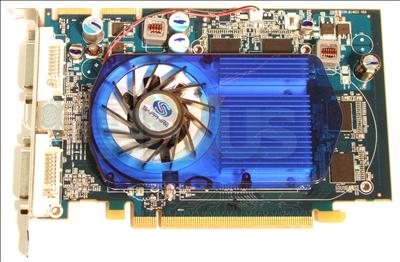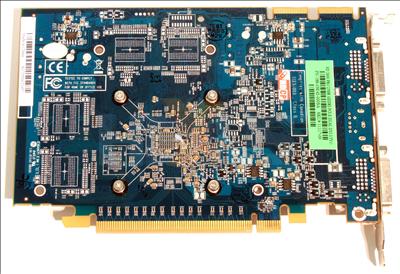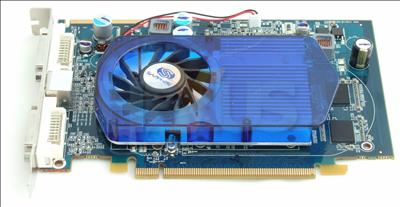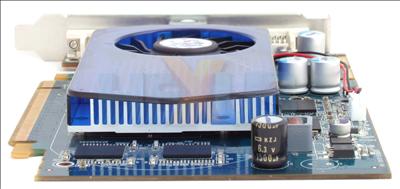Background, card appearance and thoughts
Some background
There's a significant financial gap between AMD's high-end Radeon HD 2900 XT, priced at around £250, through to the next card down in its DX10 range. The Radeon HD 2600 XT, which we took an initial look at here, proved to have significant, if untapped, clout for around £80.Now, multiple SKUs are the name of the game at the lower end of the pricing spectrum. Price elasticity of demand is such that, ideally, you'd market a different SKU every £10 or so, and that's what AMD's partners are keen to do.
Take the Radeon HD 2600 PRO as an example. It's the second-slowest of the quartet of RV630 cards, headlined by two varieties of HD 2600 XT - equipped with either GDDR3 or GDDR4 memories.
The PRO, though, takes in all the goodness of the RV630 architecture but has lower-rated clocks and, importantly, a commensurately lower street price of £60-£65, depending upon partner implementation.
For that outlay you receive DX10 hardware that's also rich in multimedia, with a unified video decoder (UVD) taking the load off decoding protected high-def content and 'native' HDMI routing, opening up the possibility of one-cable connection to the display of your choice.
That's the theory, but as we found out in our preview, the rollout hasn't been without problems.
Sapphire Radeon HD 2600 PRO 256MiB
Sapphire - probably the best-known AMD graphics-card partner - is keen to jump right on the RV630 bandwagon. Its Radeon HD 2600 PRO is under investigation.RV630 employs a unified shading architecture that leverages stream processors to undertake vertex, pixel and geometry shading, all routed through a highly-threaded dispatch engine, so high-quality visuals run through a flexible design.
Sapphire's Radeon HD 2600 PRO ships with frequencies of 700/700/1400, representing overclocked speeds on all fronts. Default-clocked cards call for Radeon HD 2600 PROs to be clocked in at 600MHz core and between 800-1000MHz memory, using either DDR2 or GDDR3.
The PCB isn't quite as large as the faster-clocked Radeon HD 2600 XT and, thus, power consumption for the 65nm-based 390M transistor design is low enough not to require additional power from your PSU.
256MiB of 1400MHz-rated GDDR3 memories are contained on the upper side; there's little to see on the back, other than to point out the CrossFire multi-GPU connector on the top-right. A suitable card-joining bridge is bundled in.
The GPU and memory throttle down when in 2D mode and, as a result, the heatsink's fan is quiet. Ratchet up the load by gaming and the fan becomes quite noisy. We note that the heatsink doesn't cover the memory modules.
The nature of the GPU and conservative clocks dictates that a single-slot cooler is more than sufficient for cooling the Sapphire's GPU.
Newer generations of GPUs should bring more than just 3D enhancements, we reckon. AMD's listened and both dual-link DVI ports support HDCP over the dual-link outputs. Further, should you require it, your motherboard's audio can be routed via the GPU and transferred, along with visuals, through a supplied HDMI adapter.














